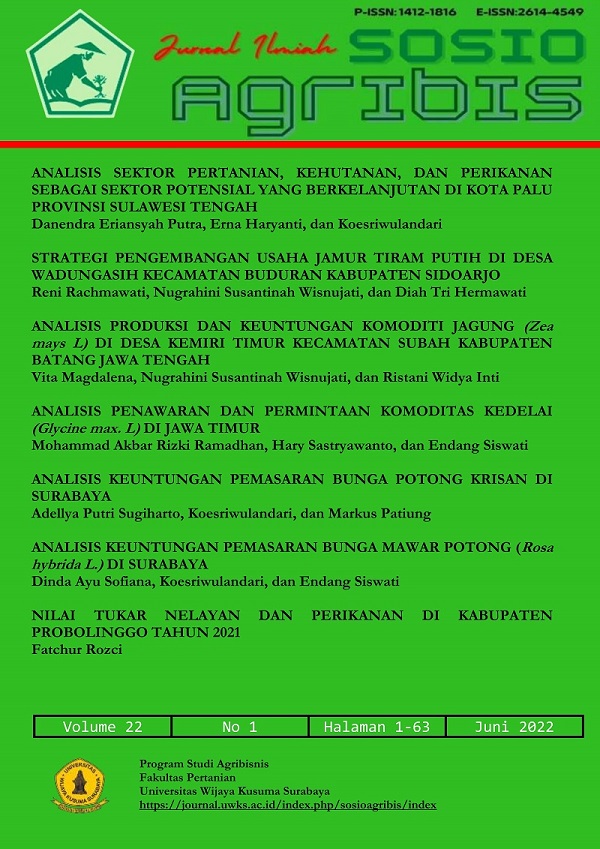Strategi Pengembangan Usaha Jamur Tiram Putih di Desa Wadungasih Kecamatan Buduran Kabupaten Sidoarjo
DOI:
https://doi.org/10.30742/jisa22120221996Abstract
The purpose of this study was to analyze internal factors (strengths and weaknesses) and external factors (opportunities and threats) as well as to analyze the strategy of developing oyster mushroom business in Wadungasih village, Buduran district, Sidoarjo regency. The research method used in this study is a descriptive method with a qualitative approach. The data analysis method uses SWOT analysis by identifying the evaluation of internal factors (IFE) and identification of external factor evaluations (EFE), then determining the right strategy through the SWOT matrix. From the results of the study, it was found that the internal factors in the development of the oyster mushroom business are having a permanent consumer market, there are main distributors, competitive prices, quality and nutritious products, being able to produce and process their own products, daily harvests, the amount of production that has not been able to meet demand, unattractive packaging, the product does not last long. On external factors, there are vegetarian consumers followed by high purchasing power, the need for raw materials for oyster mushrooms in various culinary varieties, demand for oyster mushrooms directed at education, baglog waste that can be recycled. climatic and weather factors, threats of pests and diseases on oyster mushrooms, price increases for shipping services, local government policies on oyster mushroom farmers. The strategy for developing the oyster mushroom business is in quadrant I so that the right SO strategy to be implemented can be done with the high consumption of mushroom raw materials and a wide variety of culinary opportunities to be one of the market opportunities by using them as regular consumers. consistent in retaining consumers, improving the image of good service to consumers, innovating products.
Keywords: Mushrooms, Development Strategy, SWOT.
Downloads
Published
Issue
Section
License
- The author retains copyright and grants the journal the right of first publication with the work being simultaneously licensed under the Creative Commons Attribution License which allows others to share the work with acknowledgment of the work's authorship and initial publication in this journal.
- Authors may make additional separate contractual arrangements for the non-exclusive distribution of the published journal version of the work (for example, posting it to an institutional repository or publishing it in a book), with acknowledgment of its initial publication in this journal.
- Authors are permitted and encouraged to post their work online (for example, in institutional repositories or on their websites) before and during the submission process, as it can result in a productive exchange, as well as earlier and larger citations of published work (See The Influence Open Access).

